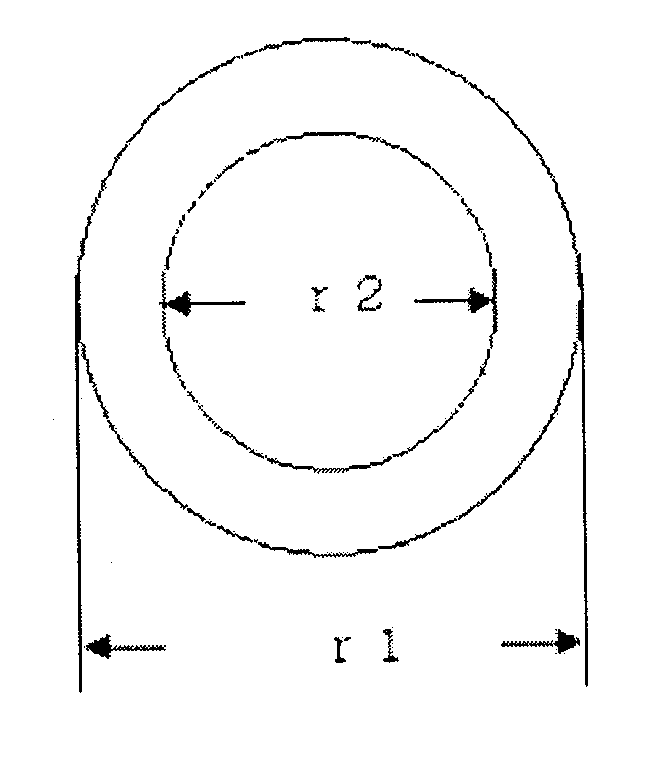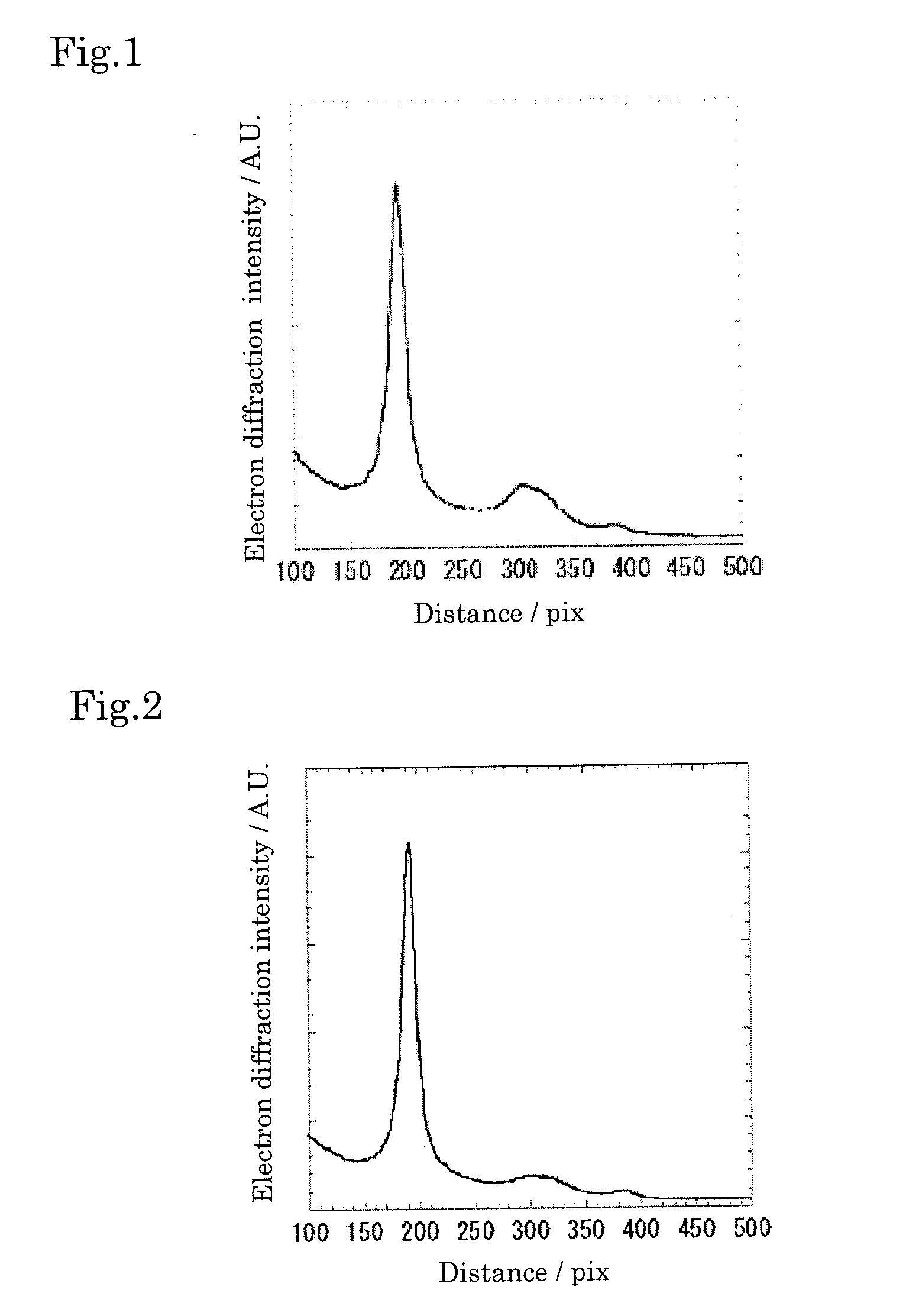Polybenzazole fiber and pyridobisimidazole fiber
- Summary
- Abstract
- Description
- Claims
- Application Information
AI Technical Summary
Benefits of technology
Problems solved by technology
Method used
Image
Examples
examples
[0058]Hereinafter, the present invention will be described further in detail along with Examples; however the present invention should not be limited to these Examples. The following methods were employed for respective measurements.
Measurement Methods:
(Limiting Viscosity)
[0059]A viscosity number of a polymer solution adjusted to have a concentration of 0.5 g / l using methanesulfonic acid as a solvent was measured in a thermostat at 25° C. using an Ostwald viscometer.
(Method of Fiber Cross-Section Observation)
[0060]A specimen obtained by embedded fibers for measurement with an epoxy resin (G-2, manufactured by GATAN Co.) was argon ion-etched by a cross-section polisher (SM-09010, manufactured by JEOL Co. Ltd.) to obtain a fiber cross-section for observation. Next, the boundary of the core layer and sheath layer was observed by an optical microscope and the average diameter r2 of the core layer and the diameter r1 of the fiber cross-section were measured to calculate the ratio R (%) o...
example 13
[0086]The fiber produced in Example 1 was subjected to heating treatment with a tensile force of 5.0 g / d and a temperature of 600° C. for 2.4 seconds. The results are shown in Table 5 and Table 6.
TABLE 5Vapor supply conditionsFiber characteristicsSteamApplica-Applica-SpinningTensileCoretempera-tiontionfilamentTensilemodulus ofHeatFlameratioElectron diffractionturemethodtimecuttingstrengthelasticityresistanceretardancyRevaluation results of fibers° C.%SecondstateGPaGPa° C.LOI%S2 / S1TUVExample 13120Atmosphere0.6No3.12616706800.771.211.21.21problem
[0087]From the results of Table 5, the fiber of the present invention was found retaining excellent heat resistance and flame retardancy.
TABLE 6Line passingNumber ofpropertyWeight ofThickness ofbroken needles(occurrencefelt (g / m2)felt (mm)(number / m2)of problems)Example 1336009.560No problem
[0088]As shown in Table 6, the fiber of the present invention was found retaining good line passing property even if heating treatment was carried out.
example 14
[0089]The fiber produced in Example 7 was subjected to heating treatment with a tensile force of 5.0 g / d and a temperature of 600° C. for 2.4 seconds. The results are shown in Table 7 and Table 8.
TABLE 7Vapor supply conditionsFiber characteristicsSteamApplica-Applica-SpinningTensileCoretempera-tiontionfilamentTensilemodulus ofHeatFlameratioElectron diffractionturemethodtimecuttingstrengthelasticityresistanceretardancyRevaluation results of fibers° C.%SecondstateGPaGPa° C.LOI%S2 / S1TExample 14120Atmosphere0.6No2.82566405101.41.2problem
[0090]From the results of Table 7, the fiber of the present invention was found retaining excellent heat resistance and flame retardancy.
TABLE 8Line passingNumber ofpropertyWeight ofThickness ofbroken needles(occurrencefelt (g / m2)felt (mm)(number / m2)of problems)Example 1436009.570No problem
[0091]As shown in Table 8, the fiber of the present invention was found retaining good line passing property even if heating treatment was carried out.
[0092]The polybe...
PUM
| Property | Measurement | Unit |
|---|---|---|
| Length | aaaaa | aaaaa |
| Temperature | aaaaa | aaaaa |
| Temperature | aaaaa | aaaaa |
Abstract
Description
Claims
Application Information
 Login to View More
Login to View More - R&D
- Intellectual Property
- Life Sciences
- Materials
- Tech Scout
- Unparalleled Data Quality
- Higher Quality Content
- 60% Fewer Hallucinations
Browse by: Latest US Patents, China's latest patents, Technical Efficacy Thesaurus, Application Domain, Technology Topic, Popular Technical Reports.
© 2025 PatSnap. All rights reserved.Legal|Privacy policy|Modern Slavery Act Transparency Statement|Sitemap|About US| Contact US: help@patsnap.com



